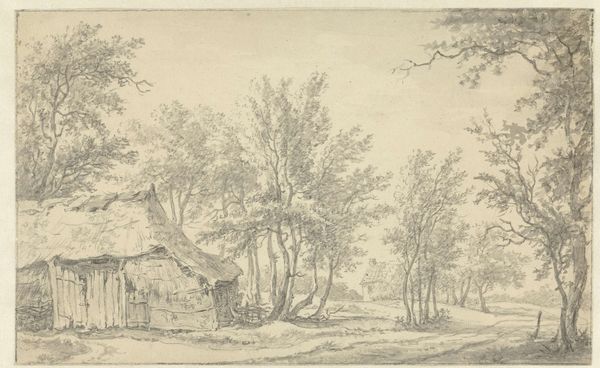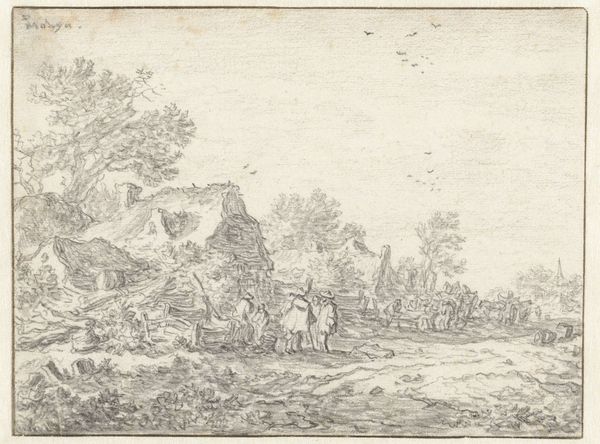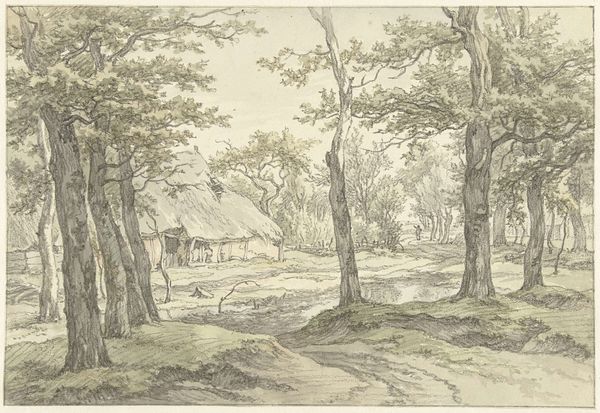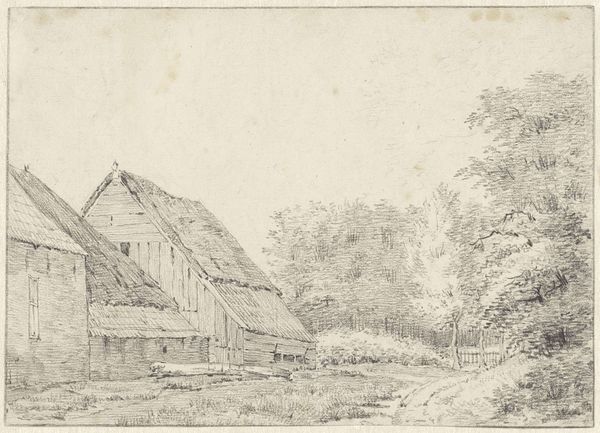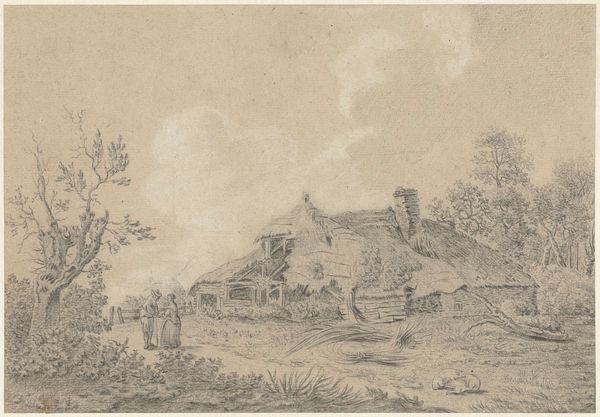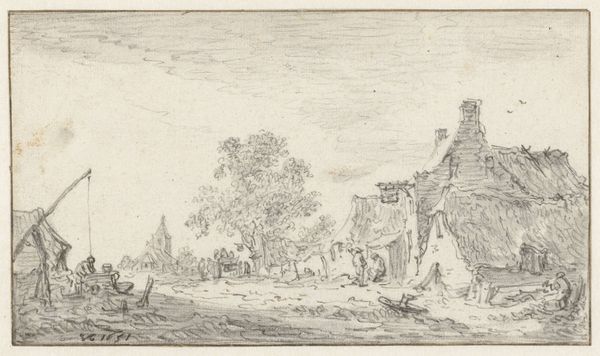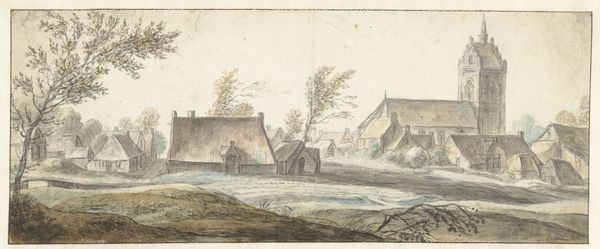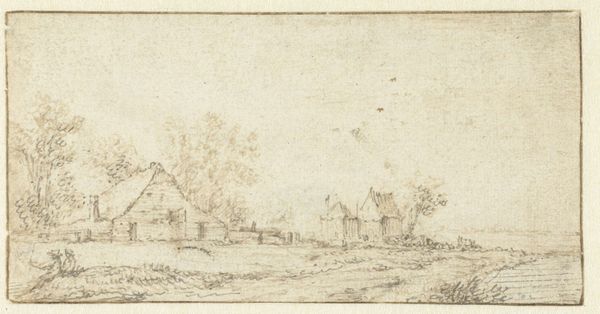
drawing, pencil
#
drawing
#
dutch-golden-age
#
pencil sketch
#
landscape
#
etching
#
pencil
#
watercolour illustration
#
realism
Dimensions: height 185 mm, width 291 mm
Copyright: Rijks Museum: Open Domain
Curator: Look at this beautiful drawing, "Farmhouse Among Trees," dating back to the mid-17th century, around 1650-1660. Pieter de Molijn is the artist; it's part of the Rijksmuseum's collection. Editor: Mmm, so gentle. I see the soft, sweeping pencil work, and immediately feel like it's a very quiet place. Somewhere far away, a hushed kind of existence. A bit faded, a touch melancholic, perhaps. Curator: Molijn was a master of Dutch Golden Age landscapes, and what’s key here is examining how he achieved this. The pencil – the graphite itself – was becoming much more widely available, enabling artists to render detailed, atmospheric scenes efficiently. Observe the marks; you can almost see the economic shifts in material production reflected there. Editor: Absolutely! It's wonderful, the detail of the trees gives off such warmth! But the almost bare field in the foreground juxtaposes it. It’s like the figure sitting there embodies both – content yet isolated in some way, which gives us much more feeling of solitude in this serene space. Curator: The farmhouse itself represents the primary mode of agricultural production at that time. You’ll notice that despite being framed as an idyllic scene, this depicts real, lived labor conditions. The structure is slightly weathered, demonstrating the constant effort needed to maintain these farms, supporting the growing merchant class nearby. The etching process of the artwork emphasizes fine detail as well, reflecting emerging industrial practices and labor division. Editor: The figures, even, blend in perfectly, right? Barely even noticeable amidst the trees. The subtle artistry just amplifies how intrinsic human beings were with this world—so dependent and ingrained in every root, rafter, and furrow. Did the drawing emerge from pencil sketches done plein air I wonder? Curator: Probably yes, and remember also that these kinds of landscapes were increasingly popular among the growing merchant class. It depicts their vision for land management, labor control, and resource extraction. What the materials and the representation meant and whose interests it served cannot be unlinked. Editor: So insightful to see this little world under that kind of a revealing, manufacturing, gaze. Makes you want to retreat to its pencil-drawn serenity even more, maybe. Curator: Yes, thinking through art as product can certainly reveal many overlooked layers of this peaceful picture, providing more appreciation of art and culture. Editor: Right, so instead of feeling wistful, I’m more keen to imagine life for those living in the Farmhouse. Very different initial and subsequent impressions I admit.
Comments
No comments
Be the first to comment and join the conversation on the ultimate creative platform.
